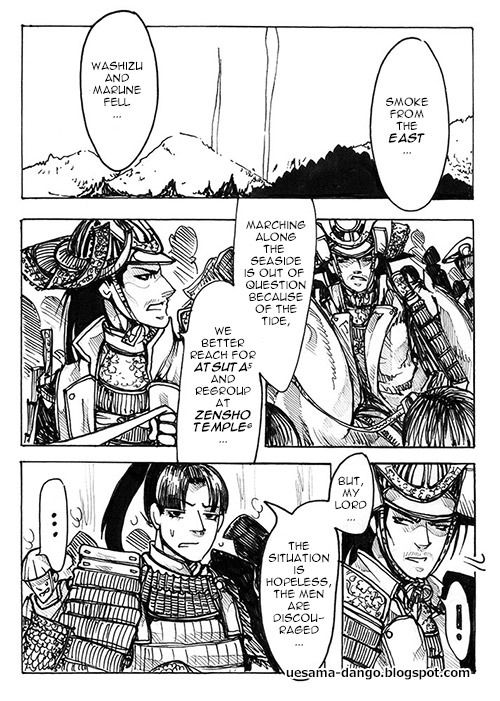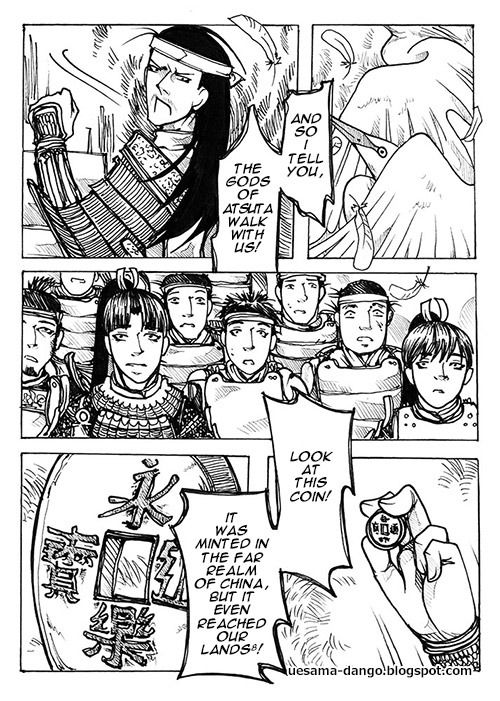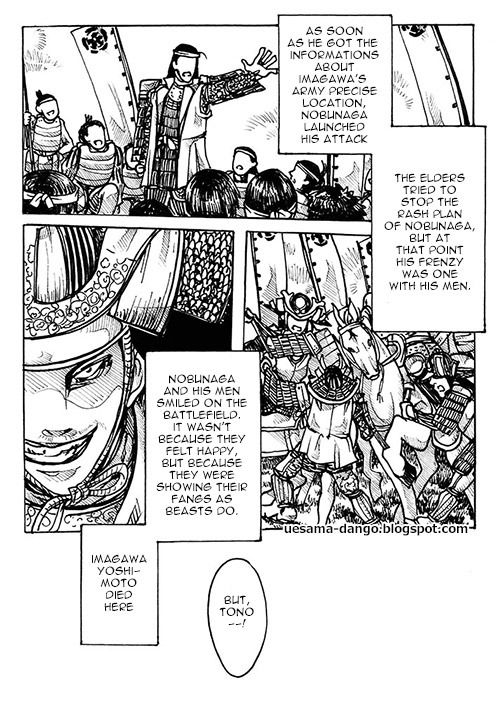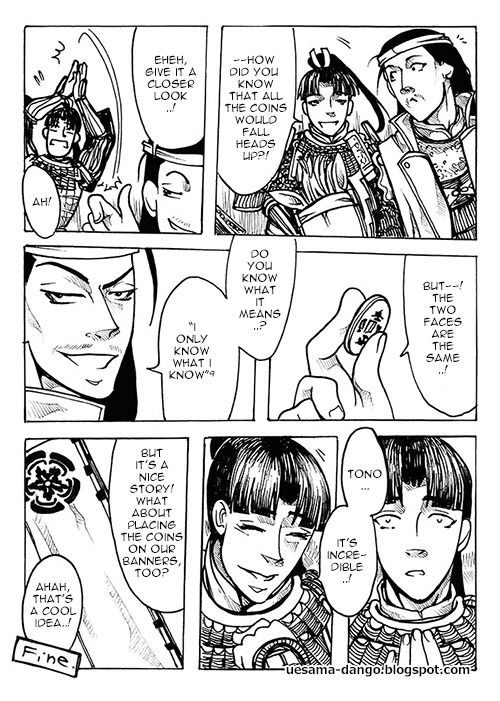In case you're wondering, the set is the Battle of Okehazama and the story is based on a legend about Eiroku coins that you can read in great details here-- I suggest you to read this article before facing my comiclet x'D !
The comic must be read from right to left, Japanese style.
--And sorry in advance if my English sounds ridiculous!

2The daimyo that controlled the provinces of Suruga, Totomi and Mikawa (the modern Shizuoka prefecture and part of the Aichi prefecture), one of the contestant for the Shogunate. A fierce enemy of the Oda Clan, Yoshimoto was the arch-enemy of Nobunaga's father, Nobuhide.
3The province controlled by Nobunaga, it's part of the modern Aichi prefecture, the one where the city of Nagoya is located.
4Two strongholds located in modern Odaka township of Midori ward.

6Zensho-ji, they are actually ruins of a temple where Nobunaga set one of his bastions.

The boy would die on 1561 against a battle of the Saito of Mino. For further infos check this out.
Note: Some references that took into considerations the "prayer" of Nobunaga point to Atsuta shrine as the location.
In this comic I opted for Gendayu Shrine, the location from where Nobunaga spotted the smoke of the fallen strongholds. Gendayu shrine is an associate shrine of Atsuta and it's located in its precints. Given the momentum and the logistic, it would have been the most probable choice.

These coins where massively imported from China during the Muromachi period and used as a Japanese currency until the Edo period.




That Eiraku Tsuho coin... makes me wonder if Nobu knows about the emperor Yong Le sending admiral Zheng He to the voyages around the world. Because if he does, then it's very fitting that he'd use it as a symbol for his "conquering the world" thing XD
ReplyDelete--I Always wondered about how much of the other people Japaneses did know at that time... Considering the campaigns of Hideyoshi in Korea, I guess that just "knew what they knew" XD
DeleteOh yeah, by the way the article wrote the order of Ware Tada Taru O Shiru wrong. should be like this: 吾唯足知
DeleteBecause the kanji are read clockwise around the circle.
You should tell him XD
DeleteWelll, if I know how to XD
DeleteYou should probably change the one you wrote in your post too, then XD
The saddest thing is-- That it was left like that also on the original anthology ToT;
Delete